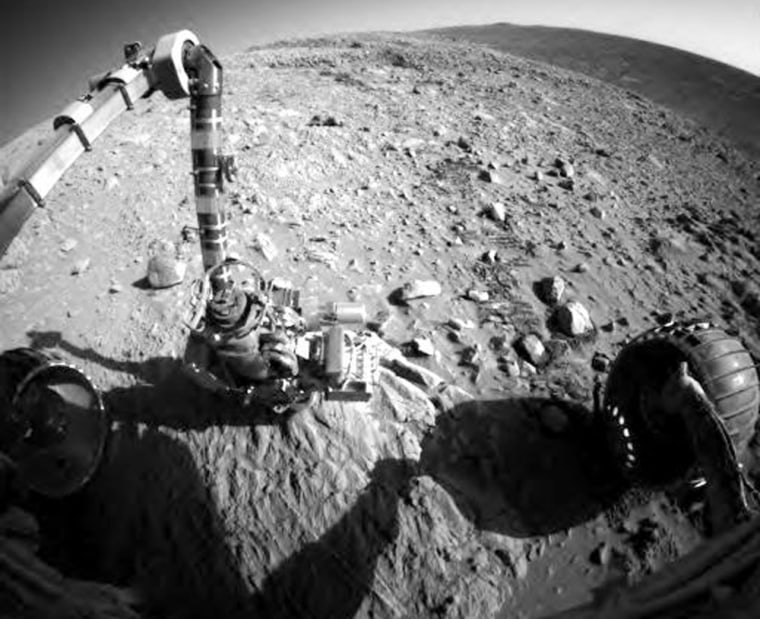A steering problem that plagued NASA’s Spirit Mars rover driving abilities has resurfaced almost two weeks after it first appeared.
Rover engineers are still working to comprehend the malfunction, but believe a relay used to turn Spirit’s steering actuators — small motors controlling the robot’s wheels — on and off is the likely culprit.
“We are continuing tests on Spirit and our test bed here at JPL,” said Jim Erickson, Mars Exploration Rover project manager at NASA’s Jet Propulsion Laboratory in Pasadena, Calif.
The steering glitch first appeared on Oct. 1 and stopped Spirit in its tracks for about five days. JPL engineers had devised a potential solution to the problem — such as deliberately blowing out a fuse to disable the robot’s brakes — but the malfunction apparently cleared up on its own. On Oct. 7, Spirit drove a few feet toward a new rock target dubbed “Tetl.”
On Oct. 13, the steering malfunction popped up again and occurred intermittently during tests last week, NASA officials said.
Back to the fuse
JPL engineers are still considering their initial plan to disable Spirit’s brakes. Blowing out the fuse would cut off the braking action of the rover’s steering actuators, but Spirit should still be able to operate without it.
“The only change might be driving in shorter steps when the rover is in rugged terrain,” Erickson said.
The steering actuators aboard the six-wheeled Spirit and its robotic twin Opportunity — also exploring Mars — keep their target wheels pointed in the proper direction during any given drive. Each of the rover’s front and rear wheels has a steering actuator, which is different from the motor that actually makes the wheels roll.
Opportunity gets a boost
Rover engineers did get a pleasant surprise from Opportunity: some bonus power after months of declining energy production from its solar panels.
When Opportunity first landed at Meridiani Planum on Mars in January, its solar panels produced a steady 900 watt-hours of power each day, about enough to run a 100-watt light bulb for nine hours, researchers said.
But the buildup of dust on the panels and the onset of Martian winter bit into the rover’s power production abilities — as expected by Opportunity’s engineers — until the robot hit a plateau of about 500 to 600 watt-hours per day during the summer months.
Since September, however, Opportunity has managed to generate more than 700 watt-hours each day, power levels it hasn’t seen its first 10 weeks on Mars.
“We’ve been surprised but pleased to see this increase,” Erickson said. “The team is evaluating ways to determine which of the few different theories is the best explanation."
Opportunity sits closer to the Mars equator and Spirit and has enjoyed a sunward-facing tilt while it explored Endurance Crater in recent months. Researchers theorize that wind may have removed some of the dust collected on the solar panels, or it may have clumped due to frost.
“We seem to have had several substantial cleanings of the solar panels,” Erickson said.
